 Rafa Nadal will go for a record 11th French Open title starting Sunday. (Source: AP)
Rafa Nadal will go for a record 11th French Open title starting Sunday. (Source: AP)
It is becoming almost tiresome to go into the French Open and call Rafael Nadal a favourite. A top favourite. It is almost expected of Nadal to win the only major on clay and make it a jaw-dropping 11 titles at Roland Garros. He’s anticipated to extend his Grand Slam titles tally to 17 by bitting the trophy on the second sunday on the Parisian clay. The question that lingers every year, and expectedly so, is – who can stop Nadal? How to stop Nadal?
Nadal’s all-time record at Roland Garros makes for scary reading if you’re going to step up to face him – as Ukraine’s Alexandr Dolgopolov will in the first round. He’s 79-2 at the French Open with the only two defeats coming to Robin Soderling (in 2009) and Novak Djokovic (in 2015). Soderling retired in 2015 and Djokovic isn’t in rich form that saw him take down Rafa in the quarters that year. His toughest opponents overall in Roger Federer and Andy Murray are missing from the draw with the Swiss continuing to focus on the grass court period that follows while the Briton is still recoving from the hip surgery.
Some questioned Nadal’s probable achievement in the absence of Federer. The Spaniard, however, thinks it shouldn’t take away from him winning a Grand Slam. “Exactly the same,” he said. “Being honest. Exactly the same. I cannot say that the victory of Federer (in 2009) when I was injured or victory of Novak (in 2016) when I was injured is not that beautiful. Would not be fair for my side. When I am winning and other players are not playing for some reason, that’s all. It’s bad news for the tournament but not for myself if I win. For me, the victory means exactly the same,” he said on Friday on Media Day prior to the start of the tournament on Sunday (May 27).
Nadal’s form coming into French Open
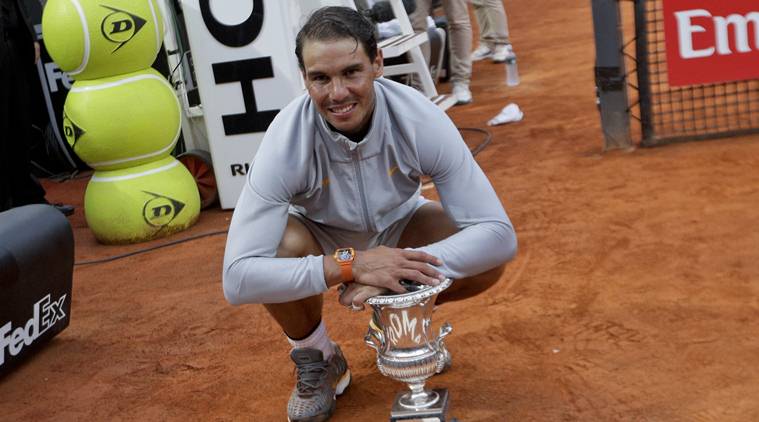 Rafael Nadal won his eighth Italian Open title in Rome. (AP Photo)
Rafael Nadal won his eighth Italian Open title in Rome. (AP Photo)
Nadal bagged the title in Paris last year, becoming the first player – male or female – to win the same Grand Slam tournament 10 times in the Open era. Worringly for his opponents, the turn of the year hasn’t stopped Nadal as he won the Barcelona and Monte Carlo titles for a record 11th time. His dominance can be further highlighted by the fact that he won 50 straight sets on clay. Eventually that run came to an end with a defeat to Dominic Thiem in Madrid. Incidentally, Nadal’s last defeat on clay had also come to Thiem last year in Rome. Moving to the Italian city, Nadal battled past tricky opponents in Fabio Fognini and Djokovic before beating Alexander Zverev in the final for his eighth title in Rome. With the title, Nadal regained the World No 1 ranking from Federer and is likely to keep hold of it at the conclusion of the slam.
Who can stop Nadal?
The toughest question and the question put across every year when the tournament comes around. Normally, the usual suspects are Djokovic, Murray, Federer and Stan Wawrinka but two of the four are not playing and the other two are working their way back to full fitness since being struck with injuries.
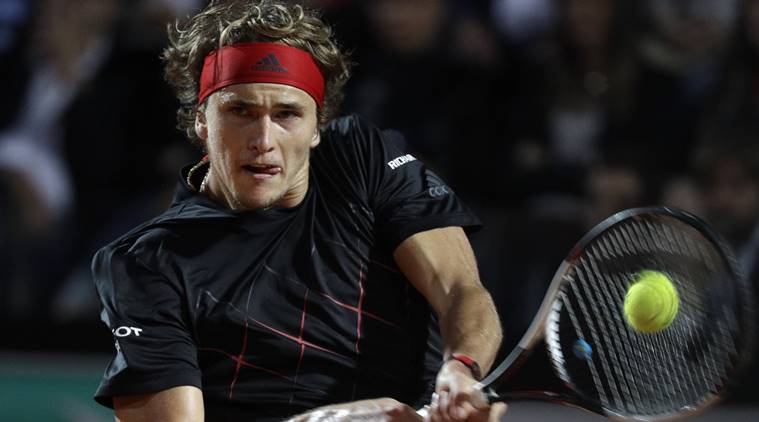 Alexander Zverev pushed Rafa Nadal to three sets in Rome. (Source: AP)
Alexander Zverev pushed Rafa Nadal to three sets in Rome. (Source: AP)
That leaves some of the young guns to stop the juggernaut that is Nadal at Roland Garros. German Alexander Zverev is the prime contender in that list. Many already consider the young German as biggest threat to Nadal winning in Paris. He’s the leading player on the ATP Tour this year with 30 matches won including two titles on clay (Munich and Madrid). However, his record at majors creates plenty of doubts over his ability to go deep into the tournament. He’s never gone past the Round of 16 of a Grand Slam.
 Dominic Thiem has beaten Rafa Nadal twice in two years on clay. (Source: AP)
Dominic Thiem has beaten Rafa Nadal twice in two years on clay. (Source: AP)
Dominic Thiem is the only player to have beaten Nadal on clay in the past two years which makes him someone who can have the measure of Nadal on the dirt. He’s reached the French Open semi-finals for two years in a row but he’s yet to clinch a Masters 1000 title. Despite Thiem edging Nadal in Rome last year and Madrid this year, things may not be as easy for the Austrian when the matchup shifts from a best of three sets to best of five.
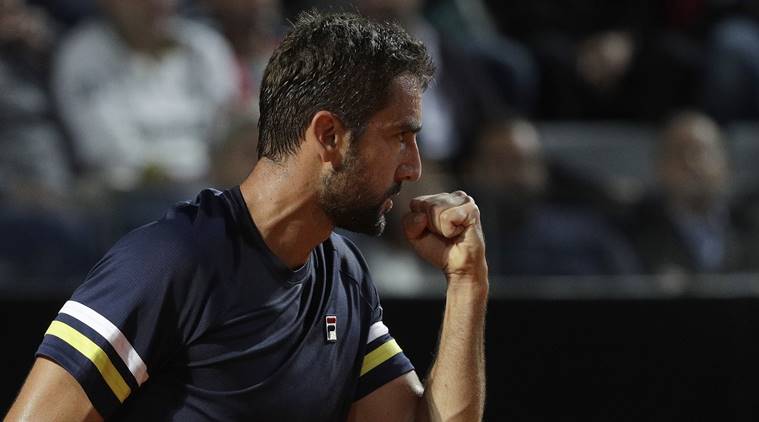 Croatia’s Marin Cilic hasn’t gone past the French Open quarters. (Source: AP)
Croatia’s Marin Cilic hasn’t gone past the French Open quarters. (Source: AP)
Marin Cilic is one of the odd choices from the top players going into the French Open main draw. The Croat who boasts of a massive serve and thundering groundstokes, doesn’t find the same impact on the slower surfaces of clay. His best showing at Roland Garros came last year with a quarterfinal run before losing to Wawrinka. But foray into the Monte Carlo quarters and Rome semis has given belief that he can create a dent on a good day. But can he do it to Nadal is a tricky proposition.
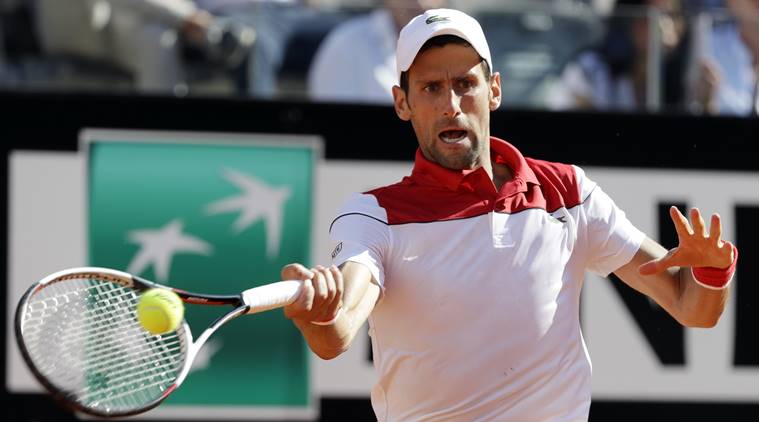 Novak Djokovic is one of two people to have beaten Nadal at French Open. (Source: AP)
Novak Djokovic is one of two people to have beaten Nadal at French Open. (Source: AP)
Novak Djokovic may have beaten Nadal in straight sets at French Open (excusing the injury reasons for a moment) in 2016 but the Serbian former World No 1 is building back following an elbow injury. The time spent out has disrupted his career and as he hopes to regain the form that made him one of the toughest opponents, he has dropped to World No 22 in the rankings. He showed some signs of Novak of the past in Rome before eventually losing to Nadal.
How to stop Nadal?
We have the suspects of who can stop Nadal but how is an even better question towards that line of thought. How do you stop someone who dictates terms from two metres behind the baseline and with the intense spin on the forehand groundstokes, makes it a mammoth task for the player on the other side. Engage him in baseline rallies and you’re only inviting trouble to see the Spaniard keep the point going before finding unimaginable angles and cramping depth.
Craig O’Shannessy, ATP’s strategy guru and tactical advisor to Djokovic, threw out the idea of an underarm serve. “Some people lost their mind at the suggestion of it,” said O’Shannessy, who looked at Dustin Brown’s attacking masterclass that took out Nadal in 2015 at Wimbledon. “The idea was perhaps just throw in one! It goes under the heading of you need to do things that make him uncomfortable, make him think twice, get inside his head.” And boy did Brown get inside Nadal’s head on grass.
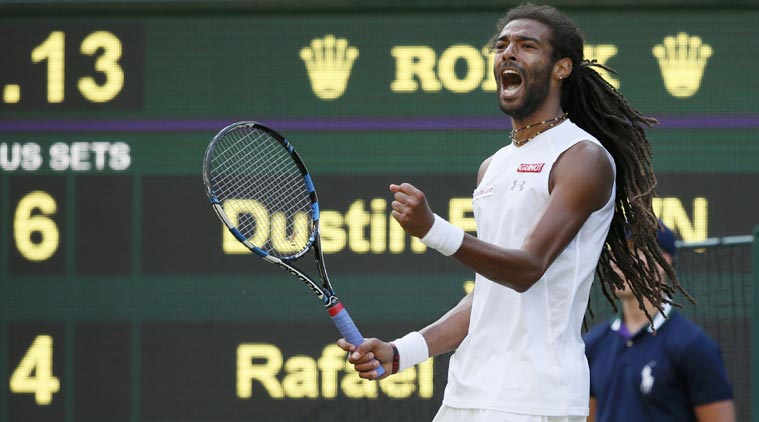 Dustin Brown knocked Rafael Nadal out of Wimbledon 2015. (Source: Reuters)
Dustin Brown knocked Rafael Nadal out of Wimbledon 2015. (Source: Reuters)
Sticking to the conventional style of serve and groundstrokes and you play into Nadal’s hands. “Rafa backs up so far when he’s receiving serve he’s halfway to Moscow. So an underarm serve? Why not?” O’Shannessy said. “People think it’s illegal. But it’s a legit shot. I’m not advocating a player continually doing it because a player like Rafa would adjust. An underarm serve might not win the point, but it throws a curve ball into the match. You need an agent of disruption. Perhaps a slow serve and volley, more drop shots. Do something radical.”
Thiem also used a strategy that put Nadal out of his comfort zone. At the higher altitude of Madrid, Thiem stepped up to Nadal’s serve and took the ball much earlier than he usually does and left Rafa with little time to react and dictate terms. Zverev tried the same in Rome and pushed the contest but in the end Nadal prevailed in three sets.